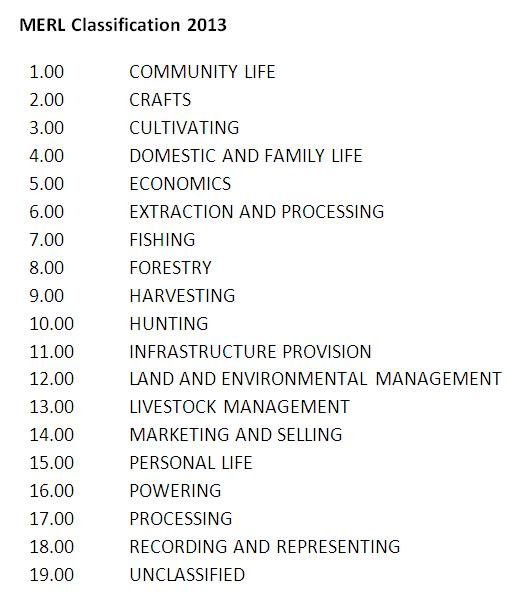Project Officer, Greta Bertram, explains more about the work she has been doing to revise the MERL Classification over the last few months.
Classification systems are used by museums to organise data about their collections. The MERL Classification was devised by John Higgs, the first Keeper at MERL, in the 1950s. It was based on the idea that MERL is a folk museum and deals primarily with people and their lives, rather than with objects. As a result, the Classification of an object is driven by its sphere of use. The Classification was initially used for the Object Collections, and later expanded to the Photographic Collections, and was also adopted by other agricultural museums in the UK.
The MERL Classification originally had 24 primary headings, which could be sub-divided into secondary, tertiary and quaternary headings, each with a numerical notation. The Classification was intended to grow and develop with the expansion of the collection, and by 1978 it had expanded to 33 primary headings. A review in the 1990s reduced this down to 31. Today the Classification is only used for objects. Find out more about the history of the Classification here.
Over the past few months we have been revising the MERL Classification as part of the Countryside21 project. One of the aims of the project is to increase the accessibility of the collections by making it easier to search them. We’re intending to do this by improving the range and quality of the keywords we use when cataloguing objects. The MERL Classification will form the basis of a new set of keywords (find out more here), so it seemed sensible to ensure it was fit for current purpose.
Until now, the Classification has contained a mixture of processes and products (things to which the processes are done). We’ve decided to separate the two out, making the Classification purely process-driven, and to have separate thesauri/vocabularies for the products, e.g. plants, animals, materials etc. The Classification terms and the ‘product’ terms can then be added to the catalogue as keywords.
It took quite a long time and a lot of debate to decide on the primary and secondary terms for the Classification, and we also consulted the Rural Museums Network to find out how the wider sector uses and views the MERL Classification. (You can read more about this process here, here and here.) We have now settled on 19 primary terms. Each primary and secondary term has a scope note which states that the term is part of the MERL Classification and which details its numerical code, how the new term corresponds to the old Classification, definition/explanations about what the term covers, and whether the term should be used in conjunction with a plant/animal/product term list. We are now in the process of confirming the vocabulary lists, which is proving to be equally challenging.
We are hoping to start implementing all of the changes and adding the Classification/vocabulary keywords to Adlib in the very near future. You can read about some of the numerous complications and challenges to do with this here. We will also be publishing the revised Classification once we are sure that it works!



